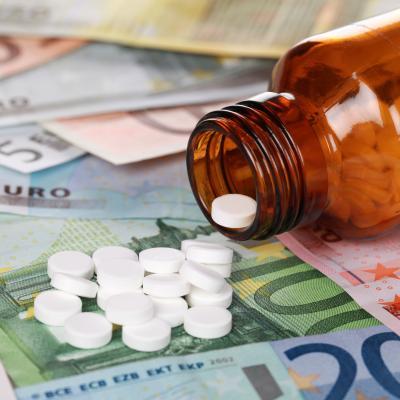Generic drugs and biosimilar drugs are conceptually equivalent, though a biosimilar drug is not a generic drug.
Generics drugs are equivalent copycats - exact copies of molecules that were developed at great cost by companies that are now outside the patent window. Biosimilars are instead copies of molecules of a protein nature involving biological processes and materials, like cell culture or the extraction of products using living organisms, which is why there is no product that is exactly the same as the other. Basically, that is why the name 'biosimilar' exists, because unlike generics they are not 'bioequivalent' to the drugs that have survived rigorous testing and approval.
Since they are comparable but not equivalent to original drugs, regulations governing generics are not appropriate for biosimilars, though the Obama administration's 2010 Affordable Care Act created an abbreviated licensure pathway similar to generics.

The development of specific regulations for biosimilar drugs guarantees the safety of these drugs and allows less expensive treatments to be developed and marketed. Credit: UPV/EHU
This is a concern for people intimate with the pharmaceutical business. The world is already overrun with suspect herbal treatments and unverified complementary and alternative medicine, so giving biosimilars an expedited stamp of legitimacy based on products that had to undergo a billion dollars in testing may be hasty.
Among the biosimilars already approved in Europe are the growth hormone erythropoietin (EPO), interferon and, more recently, the first biosimilars of monoclonal antibodies, specifically of Infliximab, designed to treat autoimmune diseases (rheumatological, psoriatic diseases and those linked to Crohn's, among others), and scheduled to be marketed from this year onwards. Monoclonal antibodies are molecules that are even more complex than the initial biosimilars, and they are expected to have a "huge" impact. It is estimated that the introduction of biosimilar monoclonal antibodies could save over millions of Euros in Europe by 2020.
"Small variations in the molecule, even in the manufacturing process, could give rise to a slightly different product, and that is why their manufacture needs to be specifically regulated," says Begoña Calvo-Hernáez, Professor of Pharmacy at the
University of the Basque Country.
The studies in this field by the PharmaNanoGene group in the Pharmacy and Pharmaceutical Technology Area of the UPV/EHU's Faculty of Pharmacy began in 2006.
"Our research covers the studies that need to be done and are being demanded by the pharmaceutical industry for the development, approval and subsequent monitoring of biosimilar drugs in line with the regulations of the European Medicines Agency," explained Calvo. "On the basis of this, the health authorities will be able to set up a suitable regulatory environment, and the prescribing of these drugs, which are going to lead to significant savings for healthcare systems, can ultimately be increased," she added.
These regulations were established in 2004 and 12 biosimilar drugs have been approved in Europe, although in the United States none have been approved as yet.
Savings for health care
In percentage terms, the savings generated by biosimilars would not be as great as those generated by generics, which can lead to savings of as much as 40% per prescription. But because they are such expensive drugs —just one of these treatments can bring annual income in excess of 1,000 million euros for the laboratory— a small reduction in the cost of production is a great advantage for the system.
According to forecasts of the IMS-Institute of Health Studies and Research, biosimilars could achieve a market share of 10% of biological drugs by 2020, with a volume of up to 25,000 million euros.
Calvo is in no doubt that we are facing a "key" moment in the development of biosimilars, "although their introduction will depend on how the health authorities want to promote them. In Spain the introduction of approved biosimilars varies: while some biosimilars have reached levels of introduction in the region of 50% (the case of filgrastim used among other purposes for combating the fall in defenses in certain oncological patients treated with chemotherapy), others like erythropoietins are in the region of 20%, and the growth hormone around 5%.





Comments